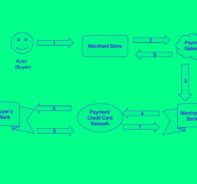Simplify your escrow payments with the Rapyd API.
Anyone can use the Rapyd Hosted Checkout Page to receive a payment and hold the funds in escrow for later release after all parties have completed their part of the payment agreement.
An escrow is an arrangement to hold funds in a transaction between two or more parties. Typically the time when the funds are released to the seller is based upon agreed requirements between the parties. For example, once a luxury art piece is delivered, or after the closing of a real estate property deal.
When a payment is made and held in escrow, there are a few ways for the escrow to be released:
- Full or partial release on demand.
- Release automatically after a specific number of days.
- Partial releases can be released by amount or percentage and proportional or non-proportional.
Any developer or merchant collecting an escrow payment without the highest standard of payment card compliance should consider using a secure way of handling sensitive credit card information. The Rapyd Hosted Checkout Page is a way to generate a secure webpage and incorporate it into your user flow. The Hosted Checkout Page can also be embedded directly into your website for a seamless user experience.
The following is an example of how to create a Hosted Checkout Page, accept a payment to hold in escrow and then release the payment.
- Note: Before you begin be sure to create your account in the Client Portal, and assign your API keys found in the Developer tab.
-
List Wallets or Create a Wallet
-
Grab the Wallet ID
-
Create Hosted Checkout Page with Escrow
4. Complete Purchase
Since the payment method is an ACH bank transfer, a request is made to complete the purchase.
Release Escrow with Payment ID and Escrow ID
You request a manual release with the payment ID starting with payment_ and escrow ID starting with escrow_.
- Note: When the funds are released, Rapyd notifies you via webhook that the transfer was completed successfully.
You can start testing now with Rapyd and the guide: Get Started and make your first API call.
Sources
Photo by Scott Graham Unsplash
Subscribe Via Email
Thank You!
You’ve Been Subscribed.



